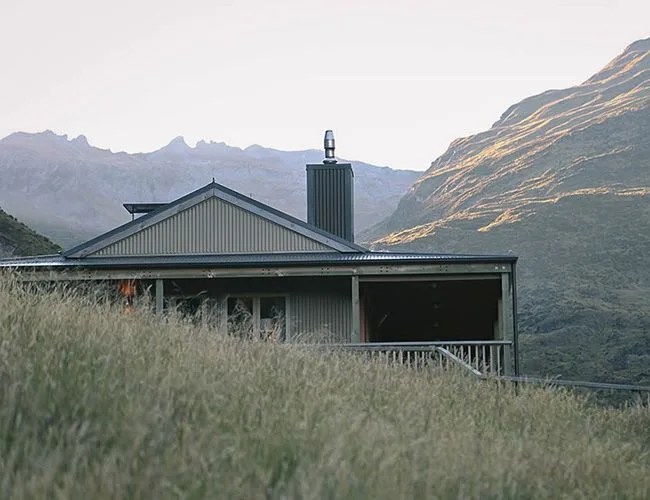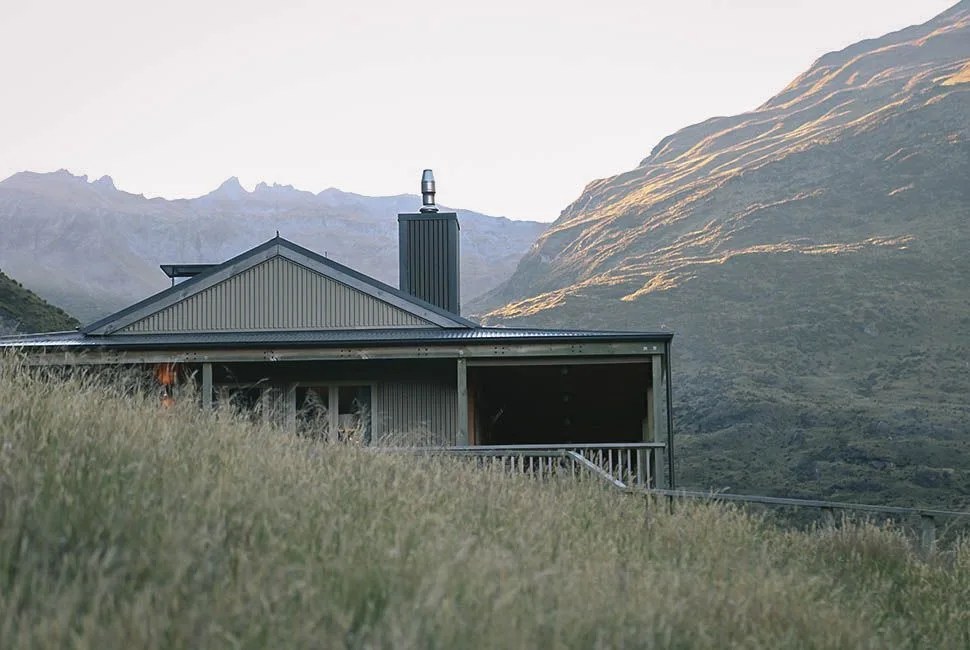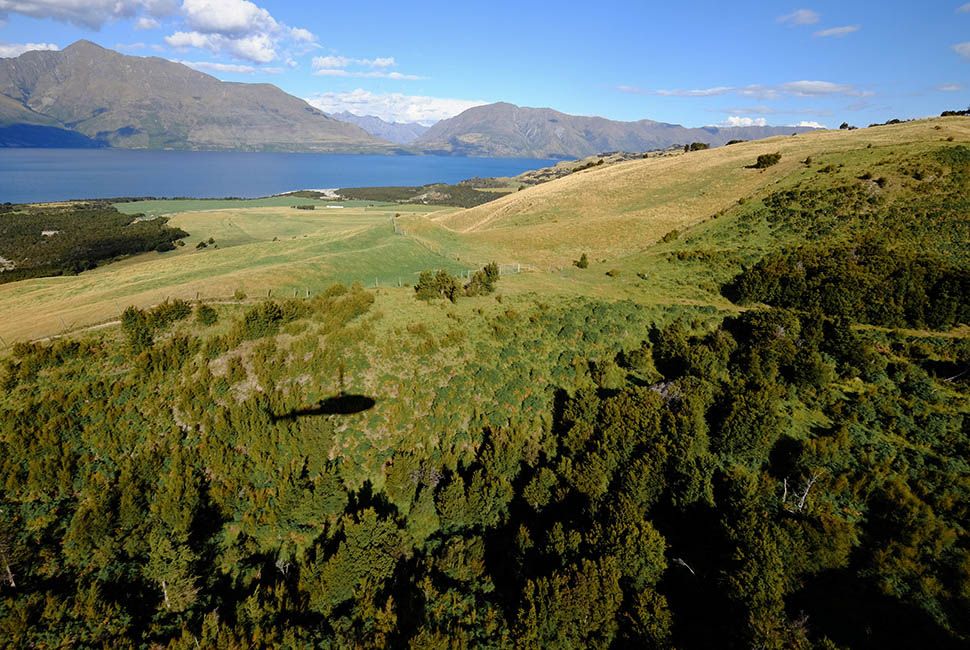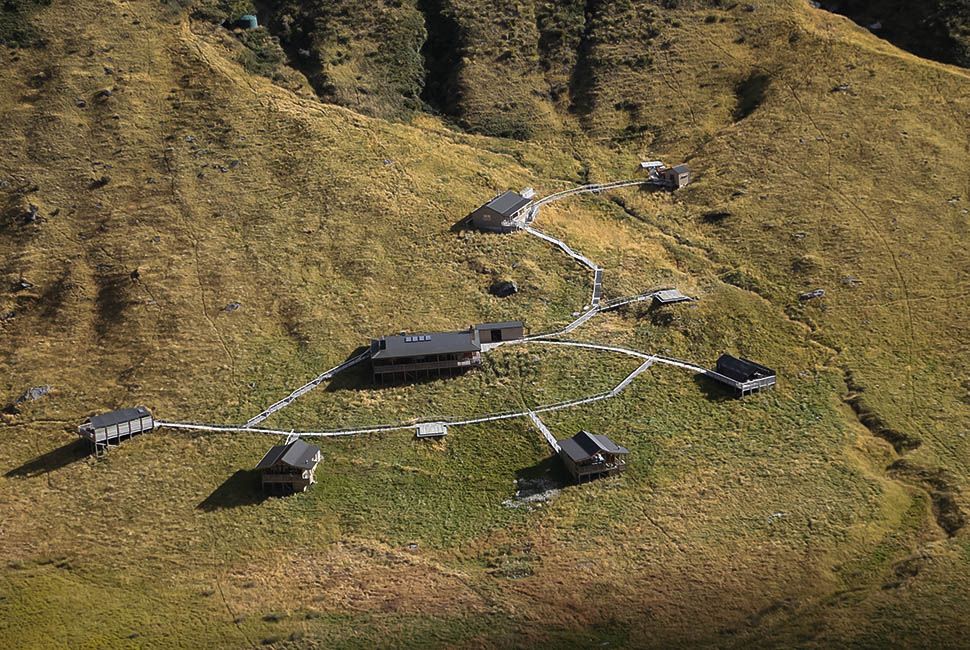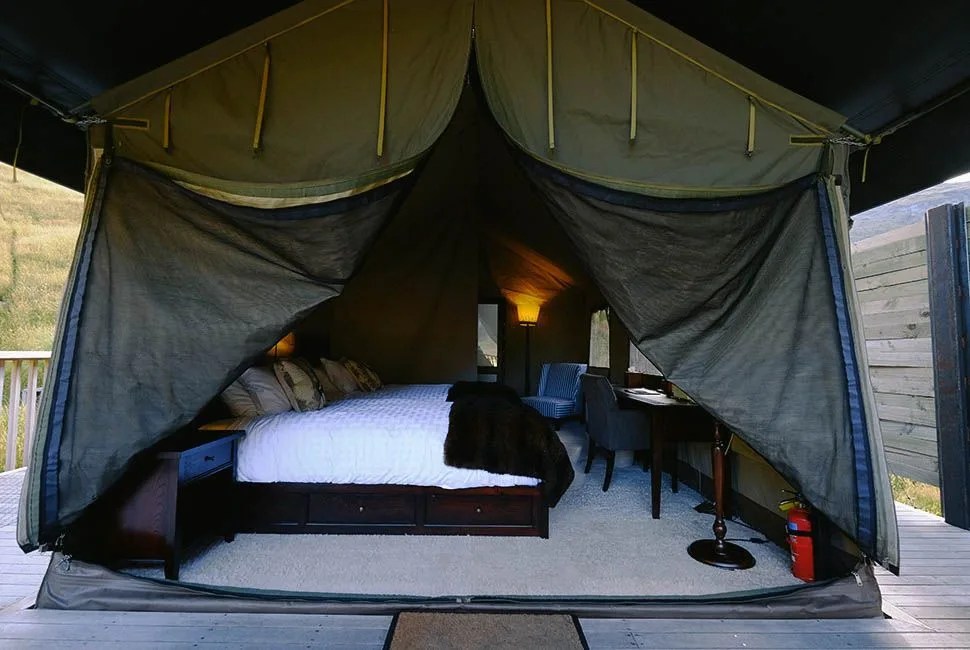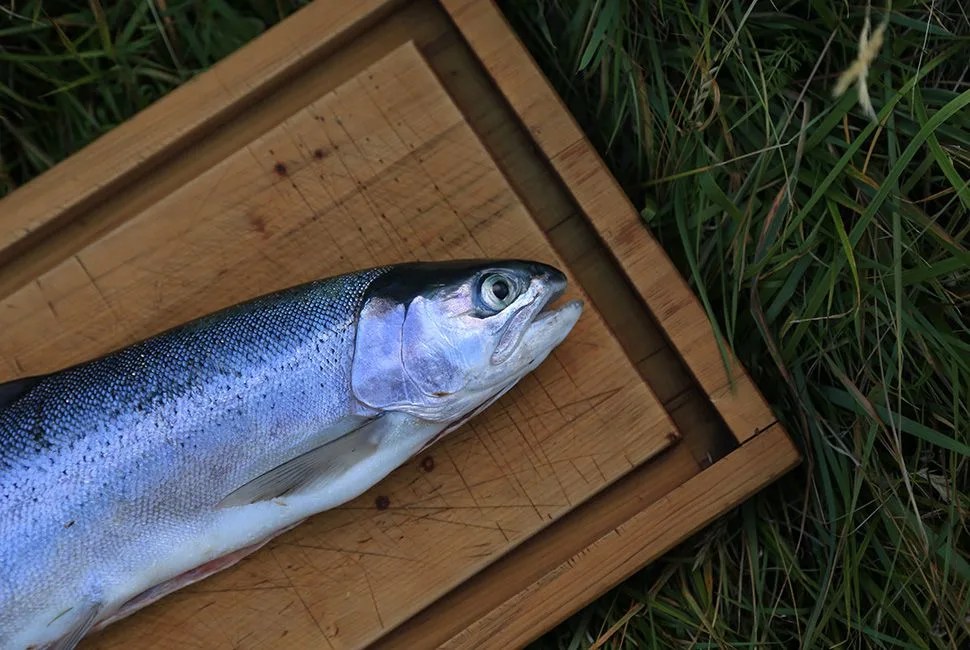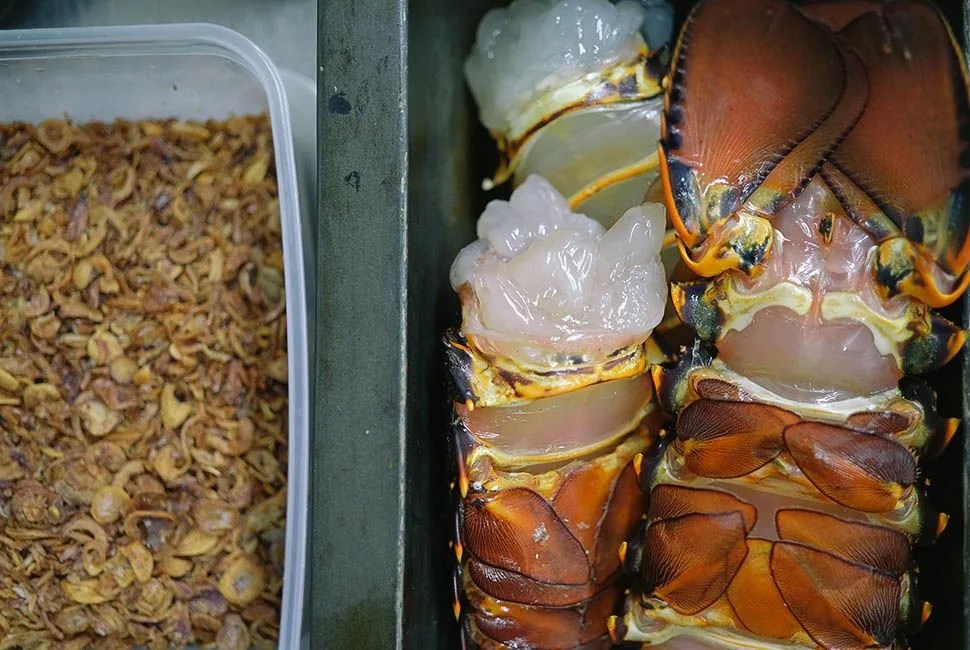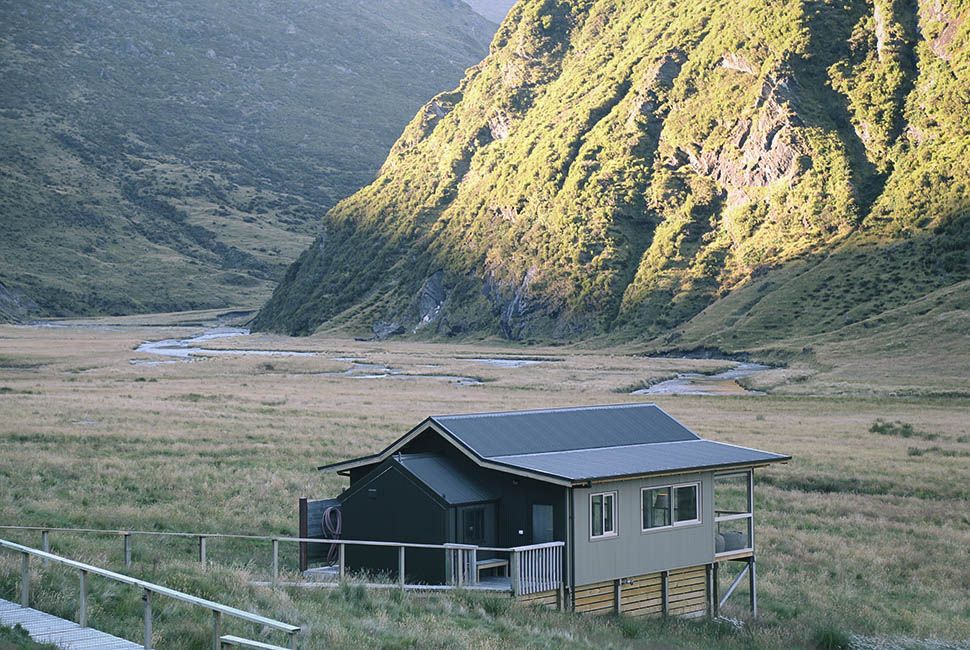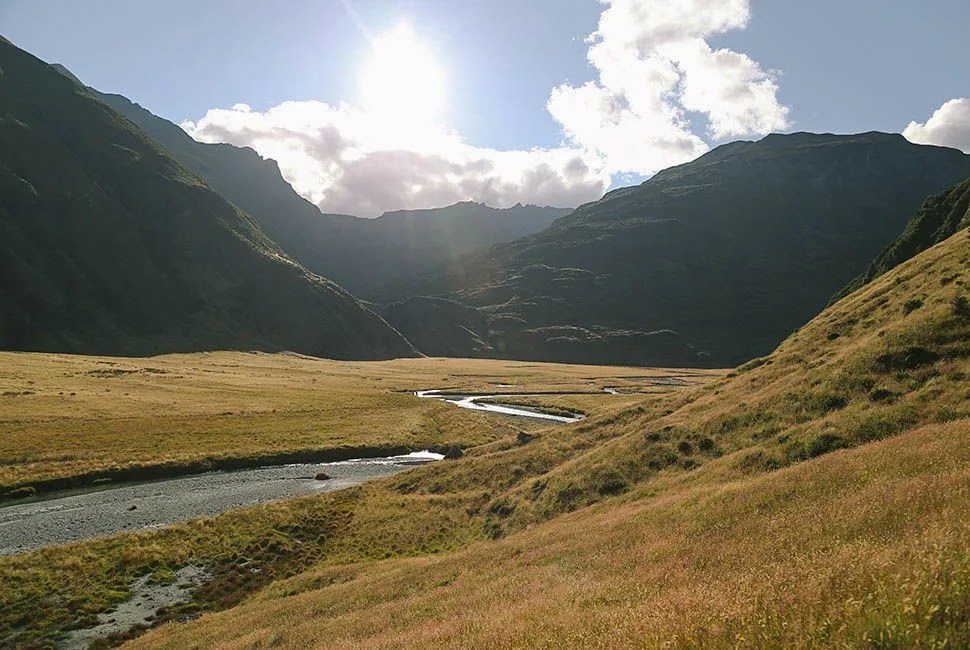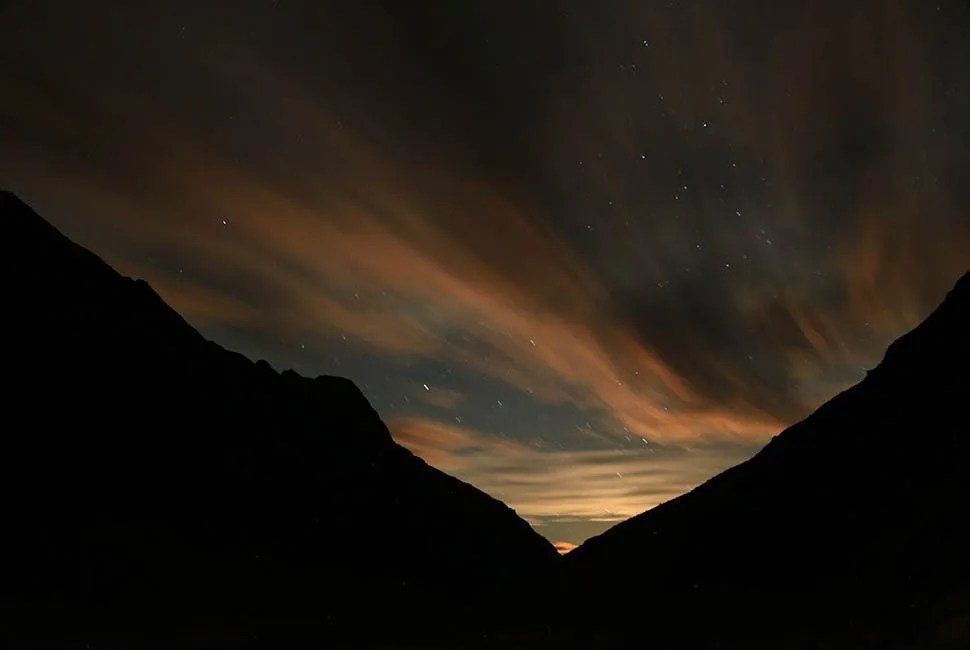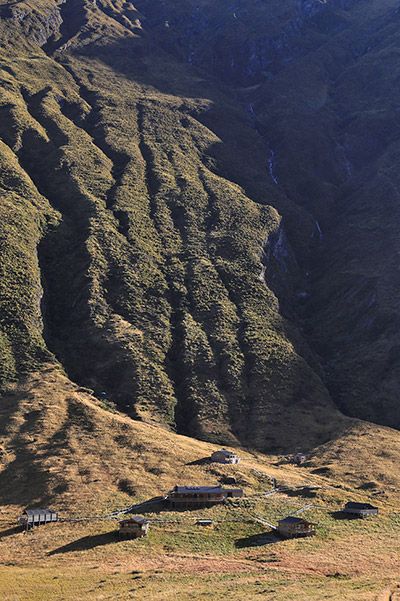9 photos
The helicopter was already waiting when we finished our hike in the Wilkin Valley. The pilot sat in the cockpit looking at his watch, stern and schedule minded, but not annoyed. We took off from a grassy patch next to Route 6 in Makarora, flew over a large swath of Lake Wanaka, and then turned west over Minaret Bay, over farmland and up into Southern Alps, mountains covered in beech forest and, higher up, with ice. We crested one of the peaks and dropped down into the valley at which point we could just make out a small network of cabins in the distance: Minaret Station, named for three peaks in the range that from the southwest looking northeast resemble the spire and conical crown typically seen atop mosques.
Minaret Station, we’d heard from Crazy Pete and other Kiwis, would be the highlight of our adventure in New Zealand: high living in one of the most beautiful settings on earth, complete with hardcore guides experienced in fly fishing, hunting and hiking. It’s so remote that the only way in or out is by helicopter. But Pete is a loon and I’m a skeptical person — so I was apprehensive. It’s glamping, I thought, and in a pinch I bet an avid outdoorsman could swim the width of Lake Wanaka and then hike in. I wasn’t prepared to buy into the hype. But as our helicopter set down next to the main lodge and we were offered espresso and a plate of charcuterie and cheese in the lodge, my attitude softened.
Located just east of Mount Aspiring National Park in the South Island, Minaret is arguably the most exclusive — and certainly one of the most expensive — accommodations in New Zealand. The property has just four rooms, known here as alpine chalets, which amount to luxury structures (two tents, two with hard walls) complete with lush beds, sheepskin carpets, a spacious bathroom, a private deck with a hot tub and some standard amenities like a Nespresso machine and mini bar (the water is bottled right from the nearby waterfall). They’re anchored by one central cabin with an open kitchen, dining room and lounge area. One night here costs NZ$2,000 ($1,515), plus the mandatory NZ$1,800 ($1,363) per person for the helicopter transfer from nearby Wanaka or Queenstown. Guests here don’t balk at a $10,000 long weekend.
“They would fly a helicopter along the side of the mountain”, Wallis says. “Then someone would jump out, grab a deer and roll around on the ground until one of them won.”
Kiwis, though, are known for their pragmatism and “can-do” attitude. It’s described colloquially as the “number 8 wire mentality”, taking after a gauge of wire used on farms and ranches — known as “stations” when they’re in high country, like here — to fix pretty much anything. And that attitude seems to apply to other areas of life. There aren’t a lot of boutique or five-star luxury hotels in Auckland, Wellington or Queenstown; what few exist aren’t on the same level you’d find in major cities elsewhere. We didn’t see a lot of designer clothes, expensive cars or restaurants with tasting menus. Measured by the amount of extravagance, it’s just not a very luxurious place.
Although Minaret is luxe, it feels a bit more Kiwi when you consider the whole operation, which settles as more blue collar. Beyond the four alpine chalets, it’s a 50,000-acre working high-country farm with roughly 10,000 deer, 7,000 sheep and 1,000 cattle. The venison, sold domestically and in export markets, is one of the main streams of income for Minaret, and it’s an important part of the station’s origin story. Minaret is owned and operated by the four Wallis brothers: sons of Sir Tim Wallis, who gradually began using and ultimately owning the land in the 1960s. Tim was an early adopter and importer of helicopters, using them to capture deer, first to cull the population and later to sell as food. Tim’s novel approach to hunting was typical Kiwi can-do.
